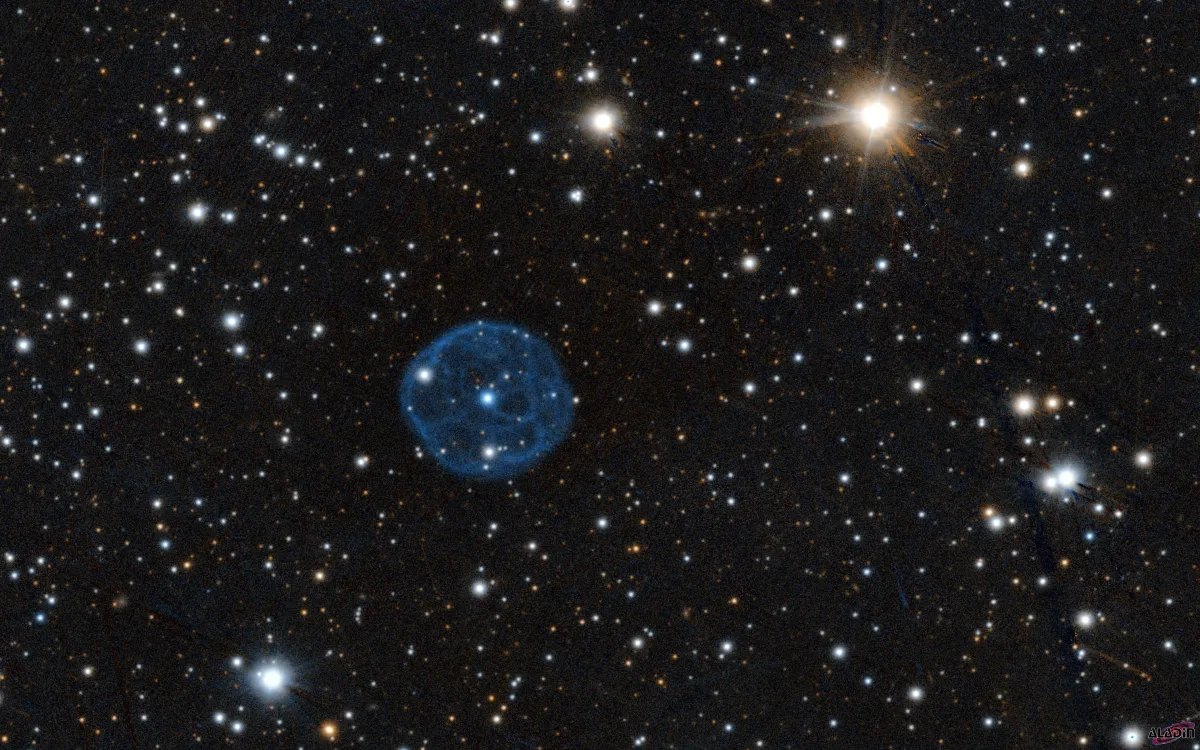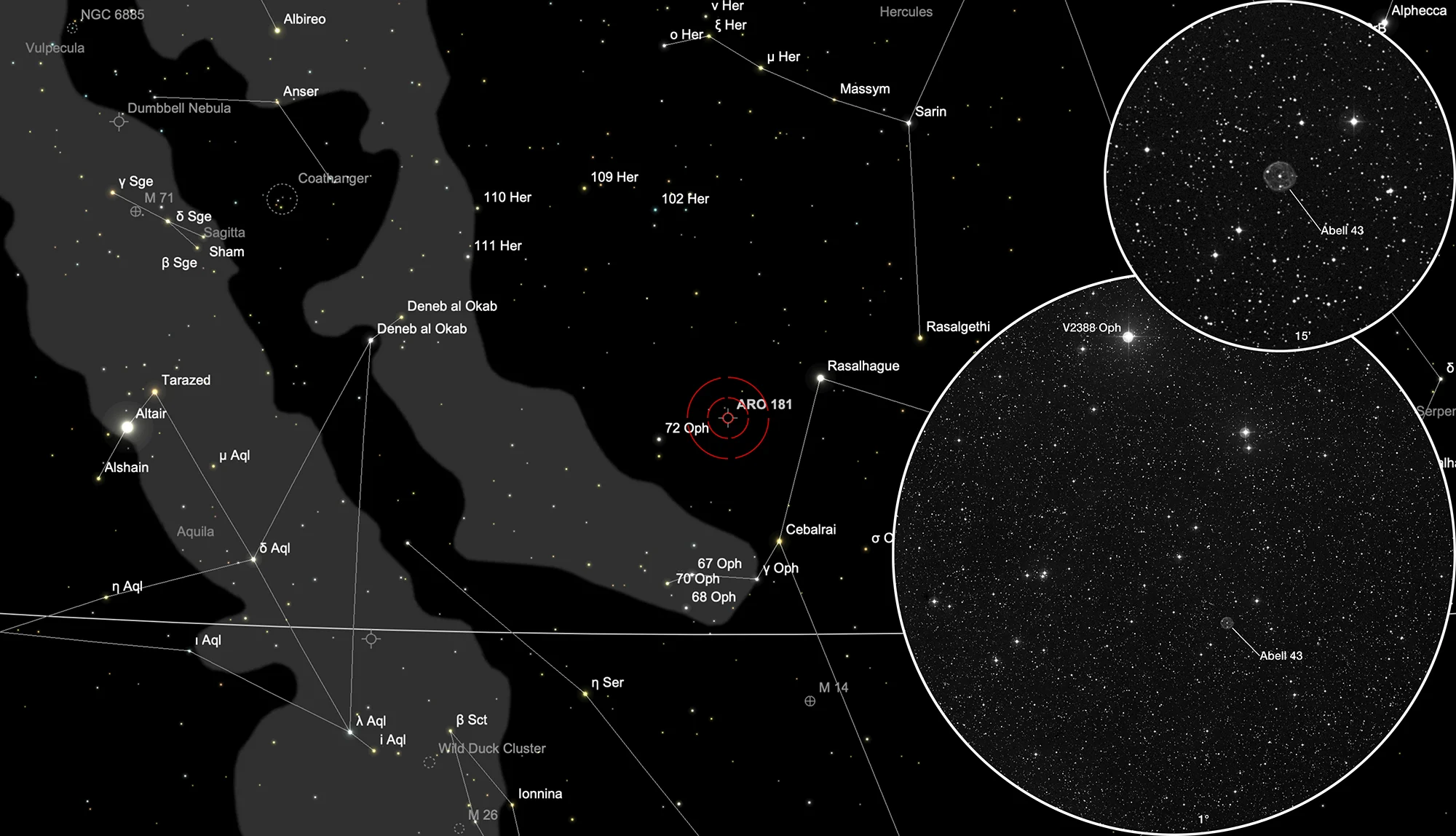Planetary Nebula Abell 43

History
The planetary nebula Abell 43 was discovered in 1955 by the American astronomer George Ogden Abell on the photo plates of the Palomar Observatory Sky Survey (POSS). In 1955 he published a first list of 13 globular clusters and the positions of 73 planetary nebulae. The PN was then listed as number 31 (A55 31). In 1966 Abell published a completed list including the size and description of the 86 planetary nebulae discovered on the POSS photo plates. The PN was then listed as nebula 43 (A66 43). He described it with «B» as «a homogeneous ring» [331, 332]
The designation PK 36+17.1 originates from the two Czechoslovak astronomers Luboš Perek and Luboš Kohoutek, who in 1967 compiled a catalog of all the planetary nebulae of the Milky Way known at the time. [146]
The lesser known designation ARO 181 originates from 1971 survey of microwave radiation from planetary nebulae conducted by Canadian radioastronomer Lloyd A. Higgs using the 46-metre Algonquin Radio Observatory in Ontario, Canada. [136, 137]
Physical Properties
| Designations | PN G036.0+17.6: A 43, PK 36+17.1, A55 31, , ARO 181, VV' 284 |
| Right Ascension (J2000.0) | 17h 53m 32s |
| Declination (J2000.0) | +10° 37' 20" |
| Dimensions | 80." (optical) |
| Radial Velocity | -42.0 ± 11.5 km/s |
| C-Star Designations | AG82 269, CSI +10 -17512, UBV 15230 |
| C-Star Magnitude | U: 13.50, B: 14.62, V: 14.75 |
| C-Star Spectral Type | O7 fk, O(H)? |
| Discoverer | ABELL 1955 |
Finder Chart
The planetary nebula Abell 43 is located in the constellation Ophiuchus. On 20 June it is in opposition to the Sun and crosses the meridian at local midnight. It is best observed from February to November.
